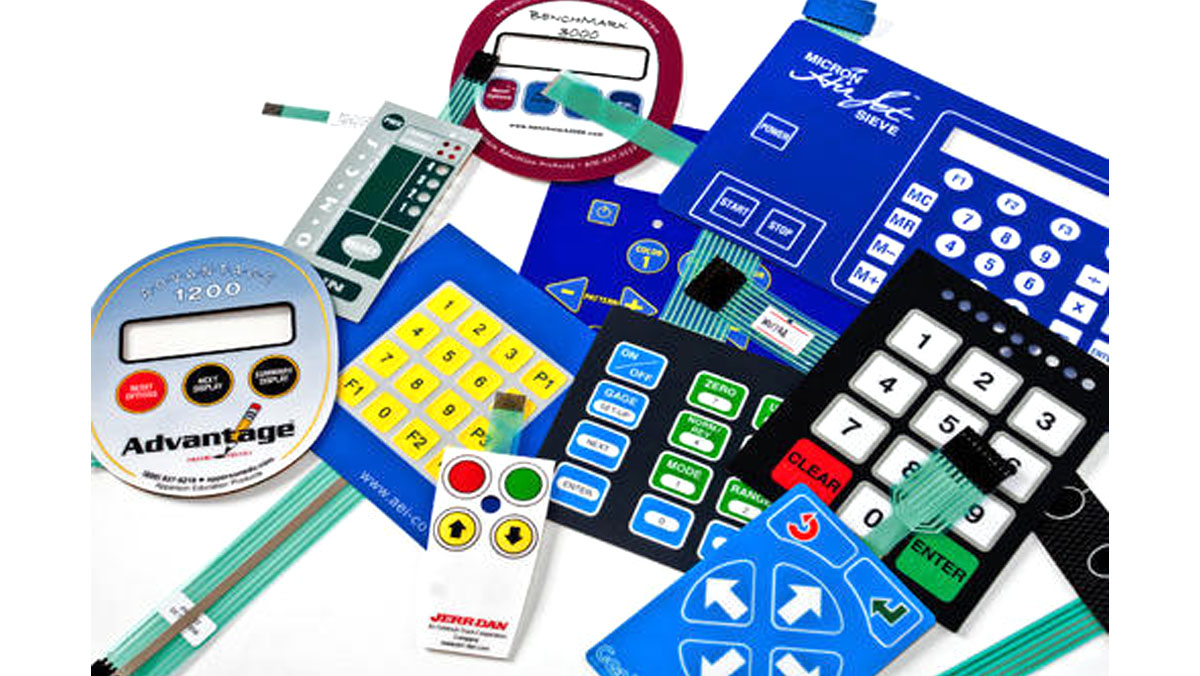Explore the Benefits of Using a Membrane Switch in Modern Devices
Explore the Benefits of Using a Membrane Switch in Modern Devices
Blog Article
Understanding Membrane Layer Switches: The Secret to Trustworthy and resilient Controls

What Are Membrane Layer Switches?
Membrane buttons are an innovative service in the realm of interface modern technology, combining performance and style flawlessly. These tools function as an interface between users and electronic systems, integrating a number of parts right into a small style. Commonly built from versatile, thin layers of materials, membrane layer buttons are designed to react to touch, allowing individuals to engage with equipment and digital gadgets successfully.
The main aspects of a membrane switch include a printed circuit layer, graphic overlay, and a spacer layer that stops unexpected activation. The visuals overlay can be personalized to show brand identity or user choices, boosting visual appeals while ensuring usability. Membrane layer buttons are frequently used in various applications, including clinical gadgets, consumer electronics, and commercial tools, owing to their longevity and resistance to ecological aspects such as moisture and dirt.
Among the crucial advantages of membrane layer buttons is their capability to endure wear and tear, making them ideal for high-traffic settings. Furthermore, they are lightweight and require marginal room, enabling for innovative layouts in item advancement. Overall, membrane changes represent a reliable and useful choice for contemporary electronic interfaces, marrying modern technology with user-centric design principles.
Just How Membrane Switches Over Work
The procedure of membrane layer switches hinges on a straightforward yet effective system that equates customer input into electronic signals. When a user presses the switch, the top layer warps, permitting a conductive element in the circuit layer to make contact with a matching conductive pad on the bottom of the visuals overlay.
The design of membrane switches can vary, however they often integrate domes or tactile aspects to give feedback to the user, improving the general experience - membrane switch. The products made use of in membrane switches, such as polyester or polycarbonate, add to their resilience and resistance to ecological variables, including moisture and dust. Moreover, the printed circuits are commonly encapsulated, which safeguards them from deterioration over time.
Advantages of Membrane Layer Switches

In addition, membrane switches are known for their longevity. Constructed from robust materials, they are resistant to dust, moisture, and physical wear, which substantially expands their life-span contrasted to traditional mechanical switches. This resilience makes them especially appropriate for high-traffic atmospheres and applications calling for long life.
Another considerable advantage is the convenience of cleaning and maintenance. The smooth surface area of membrane layer switches minimizes dust accumulation and is usually unsusceptible spills, making them perfect for setups that need constant sanitization.
Moreover, membrane switches supply a structured account, bring about a thinner layout that can be integrated into various tools without including mass. This function not only enhances the visual charm however also contributes to click here for info a more ergonomic item layout.
Applications of Membrane Layer Switches
Versatile and user-friendly, membrane switches find applications throughout a variety of sectors, consisting of clinical tools, customer electronics, and industrial tools. In the clinical area, these buttons are pop over to this site important to gadgets such as analysis tools, person tracking systems, and infusion pumps, where dependability and simplicity of cleaning are crucial. Their capacity to hold up against rough settings and maintain functionality makes them ideal for such applications.

In consumer electronics, membrane layer buttons are used in products like microwaves, cleaning machines, and push-button controls - membrane switch. Their streamlined style enables intuitive interface, enhancing the general customer experience while providing longevity and resistance to tear and use
Commercial equipment likewise profits from membrane layer switches, especially in control panels for equipment and automation systems. These buttons provide security versus dust and wetness, guaranteeing constant efficiency in challenging settings. Additionally, their adjustable attributes allow makers to customize them to specific operational requirements, improving performance and functionality.
Picking the Right Membrane Layer Switch Over
When picking a membrane layer button, it is important to consider various factors that influence efficiency and viability for certain applications. The main considerations include environmental problems, responsive comments, toughness, and style specs.
First, assess the operating environment; buttons subjected to wetness, chemicals, or extreme temperature levels need certain materials to ensure long life and capability. Next off, review the requirement for tactile comments. Depending upon user communication, some applications might gain from a tactile reaction to confirm activation, while others might like a non-tactile design for visual factors.
Sturdiness is one more vital aspect; membrane switches should be designed to hold up against constant browse around these guys use, effects, and abrasion. Ensure the picked switch can endure the anticipated lifecycle, especially in high-usage scenarios.

Conclusion
In verdict, membrane layer changes act as essential parts in the style of reputable and resilient control systems across numerous industries. Their portable style, combined with durable construction and personalized functions, enhances individual interaction while making certain durability sought after atmospheres. The convenience of membrane switches over enables customized options that fulfill particular functional requirements, enhancing their importance in modern-day technology. As markets proceed to develop, the relevance of integrating reliable membrane switch remedies can not be overstated.
Membrane changes stand for a critical aspect of contemporary user interface layout, mixing functionality with resilience in different applications.Membrane layer buttons are a sophisticated service in the world of user interface innovation, incorporating functionality and style effortlessly. Typically built from versatile, slim layers of materials, membrane buttons are created to react to touch, enabling individuals to engage with equipment and digital gadgets properly.
The design of membrane switches can vary, however they commonly integrate domes or tactile elements to give comments to the individual, improving the general experience.In verdict, membrane layer changes offer as vital elements in the style of dependable and sturdy control systems across numerous markets.
Report this page